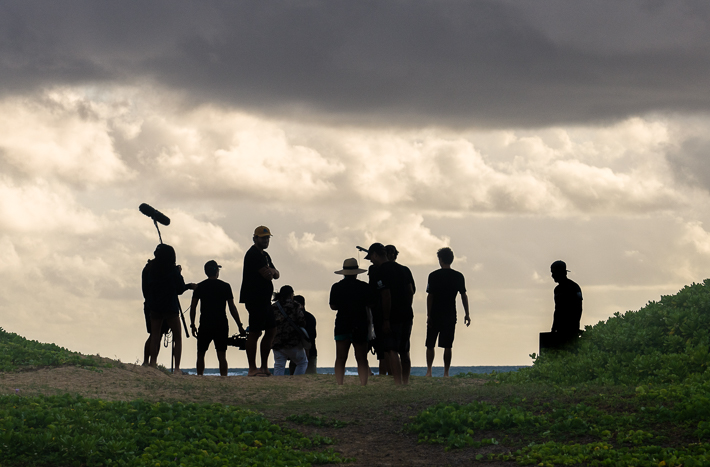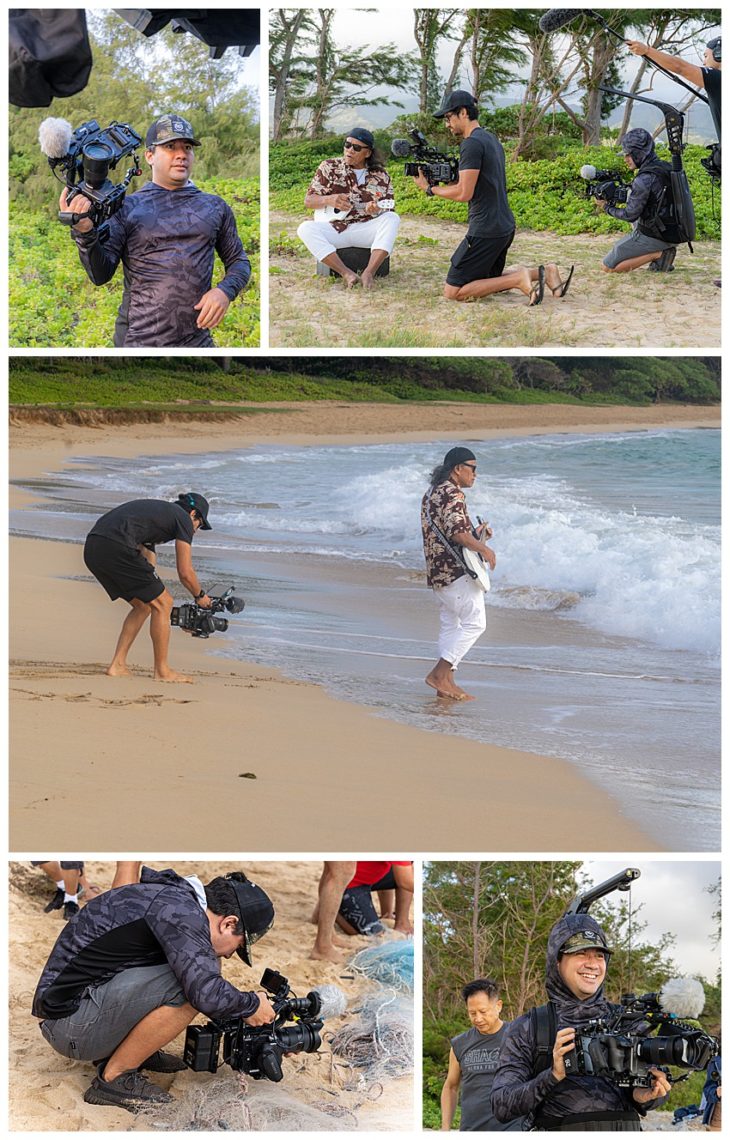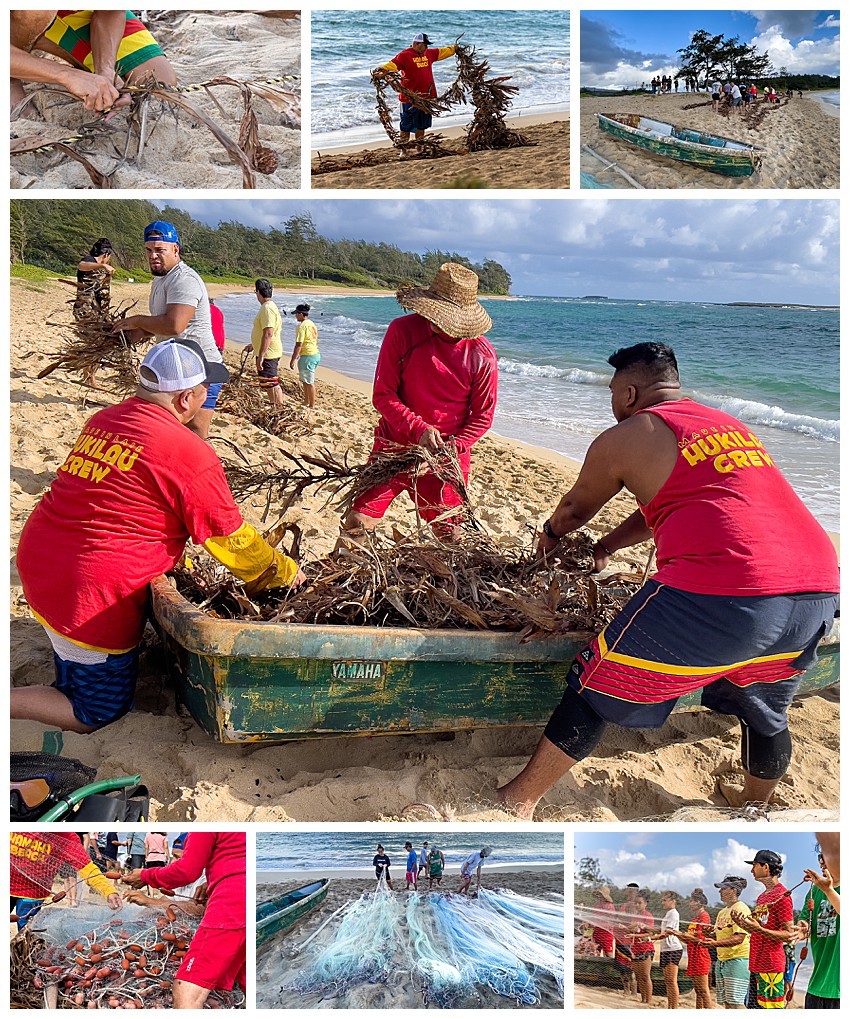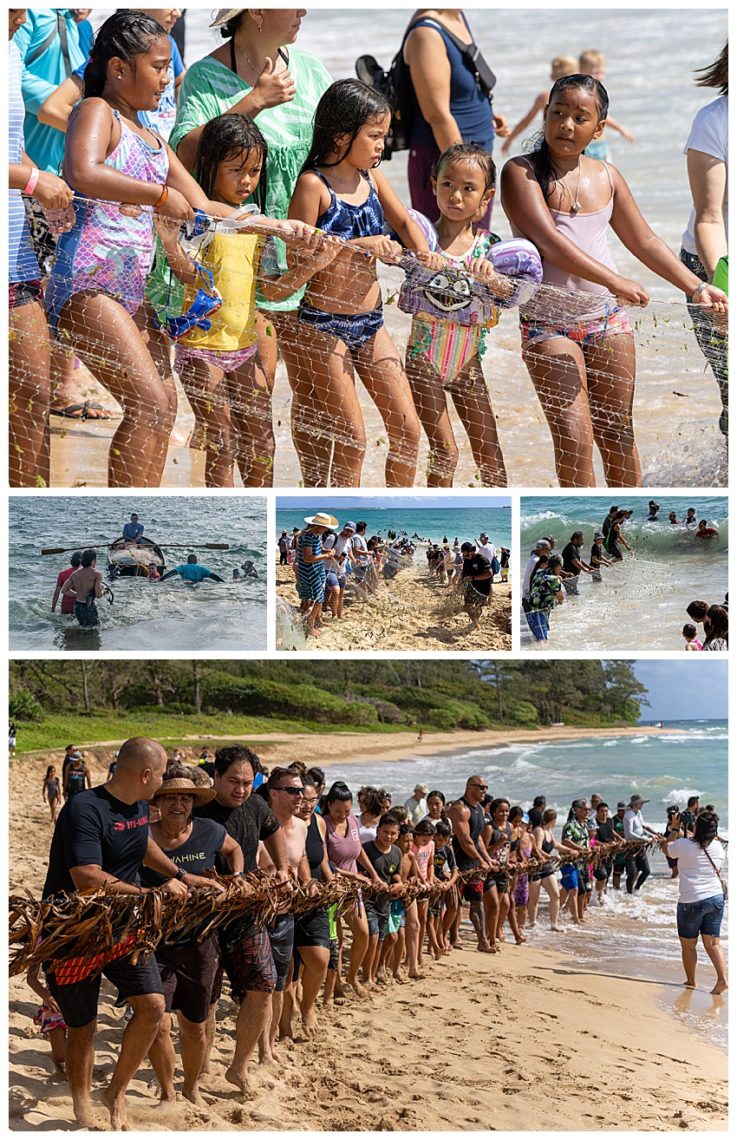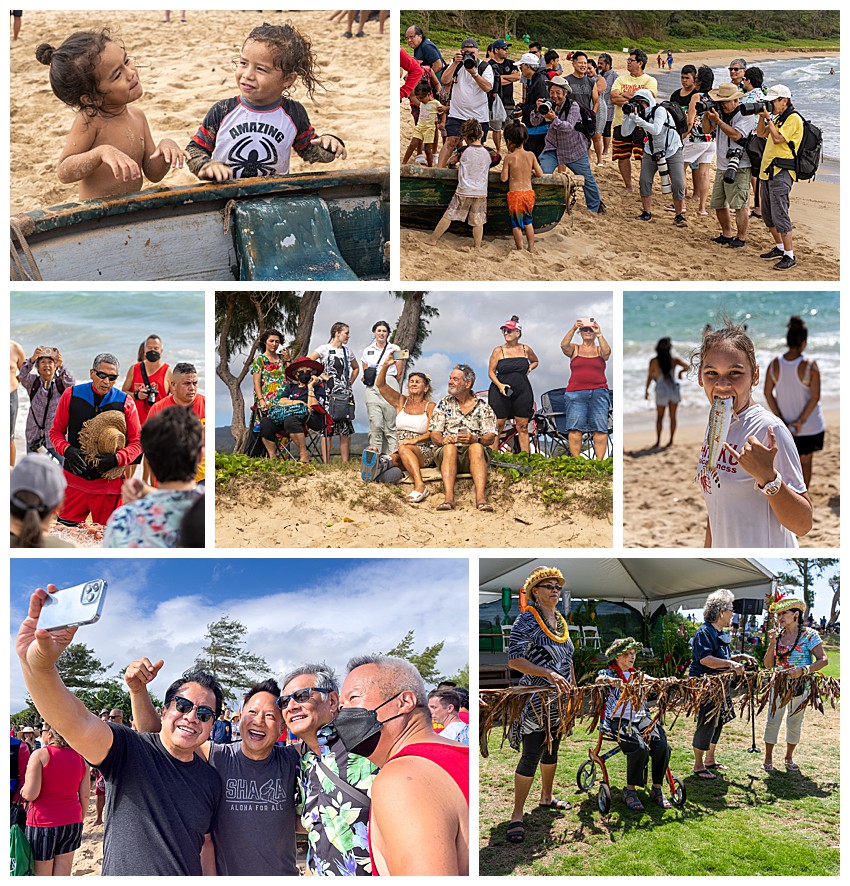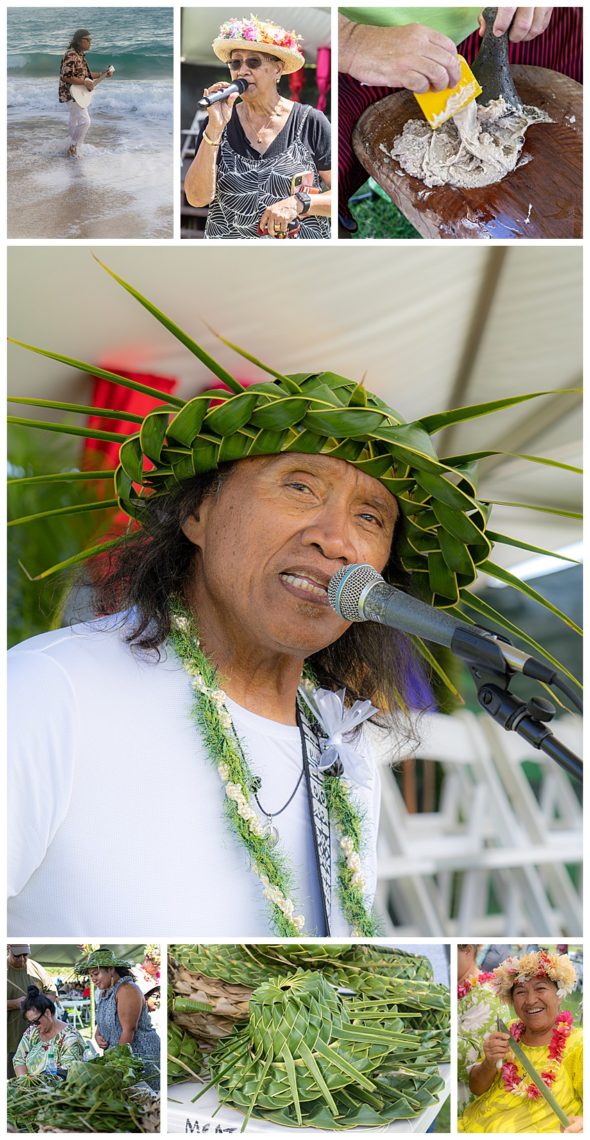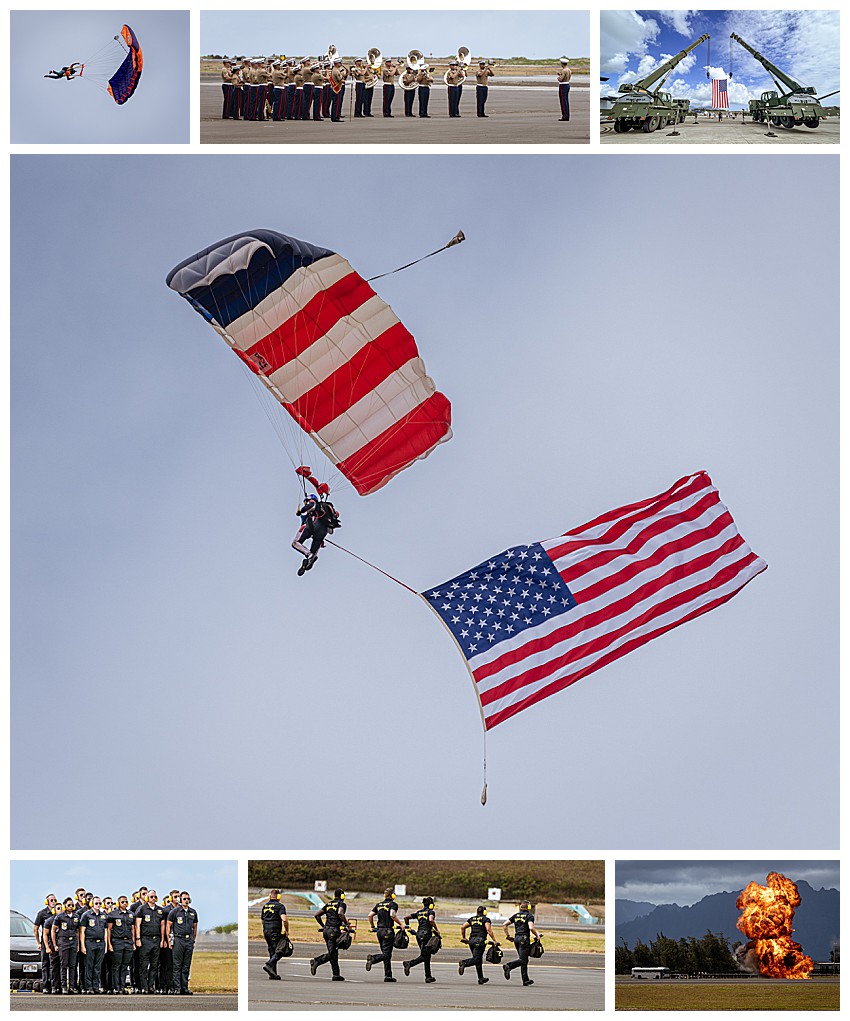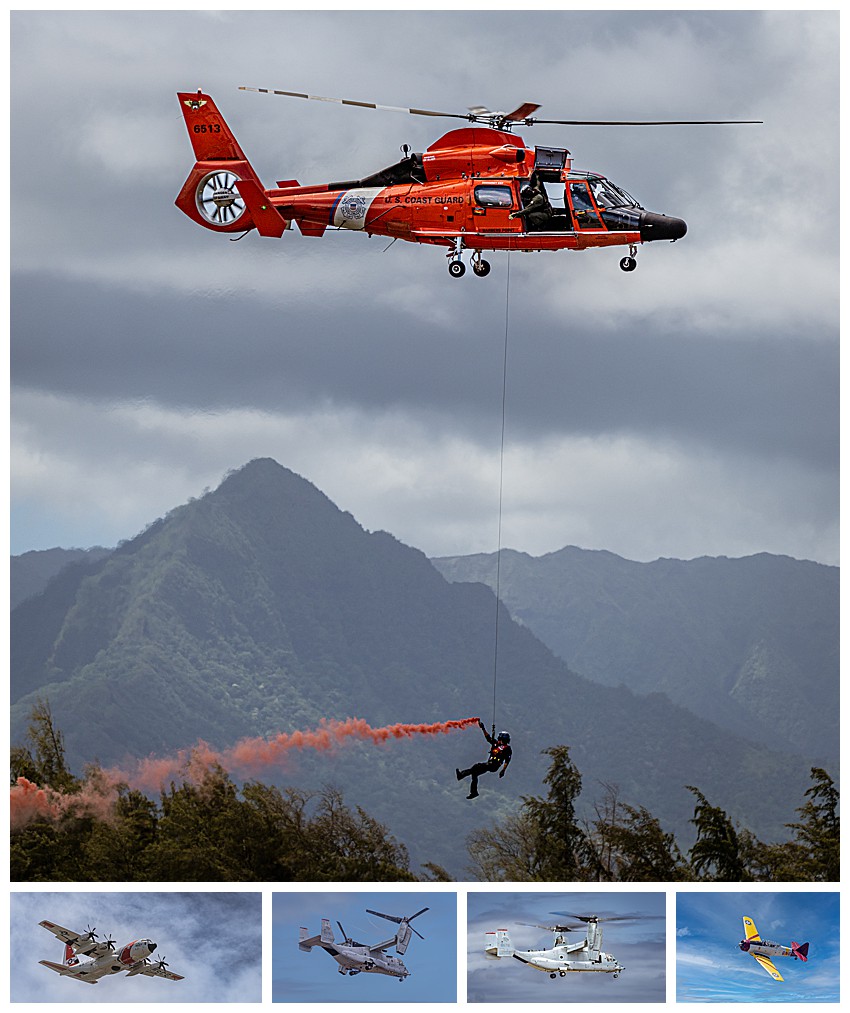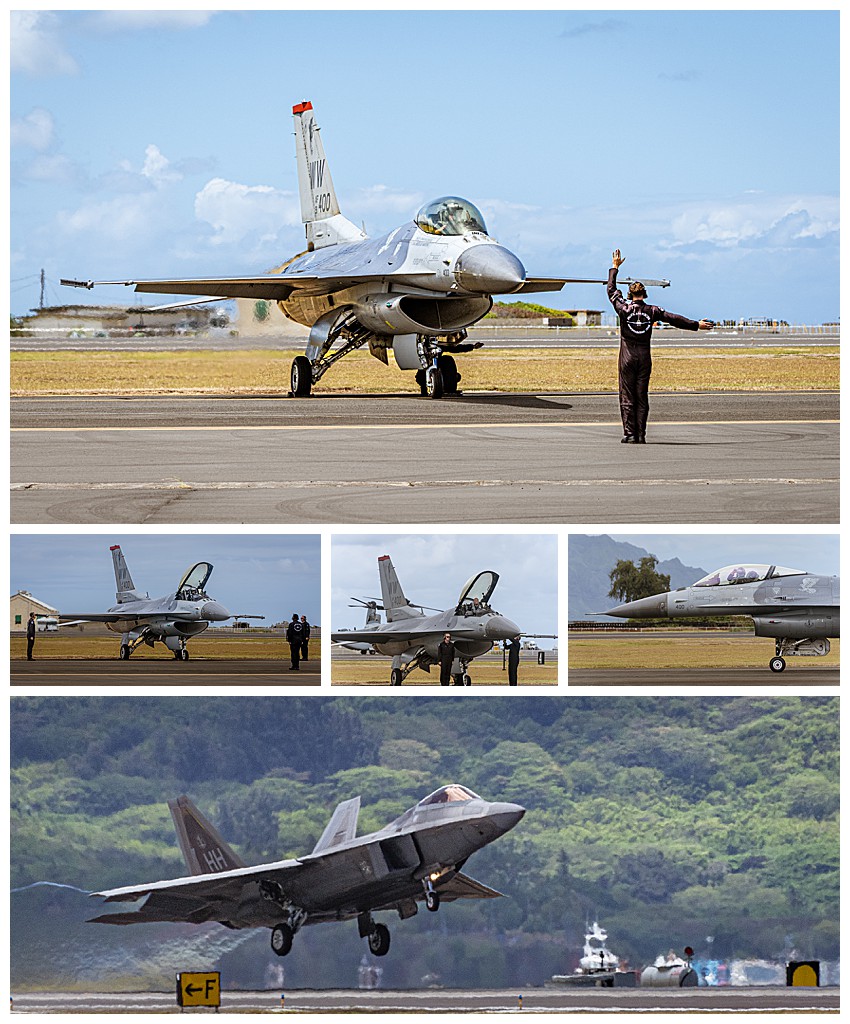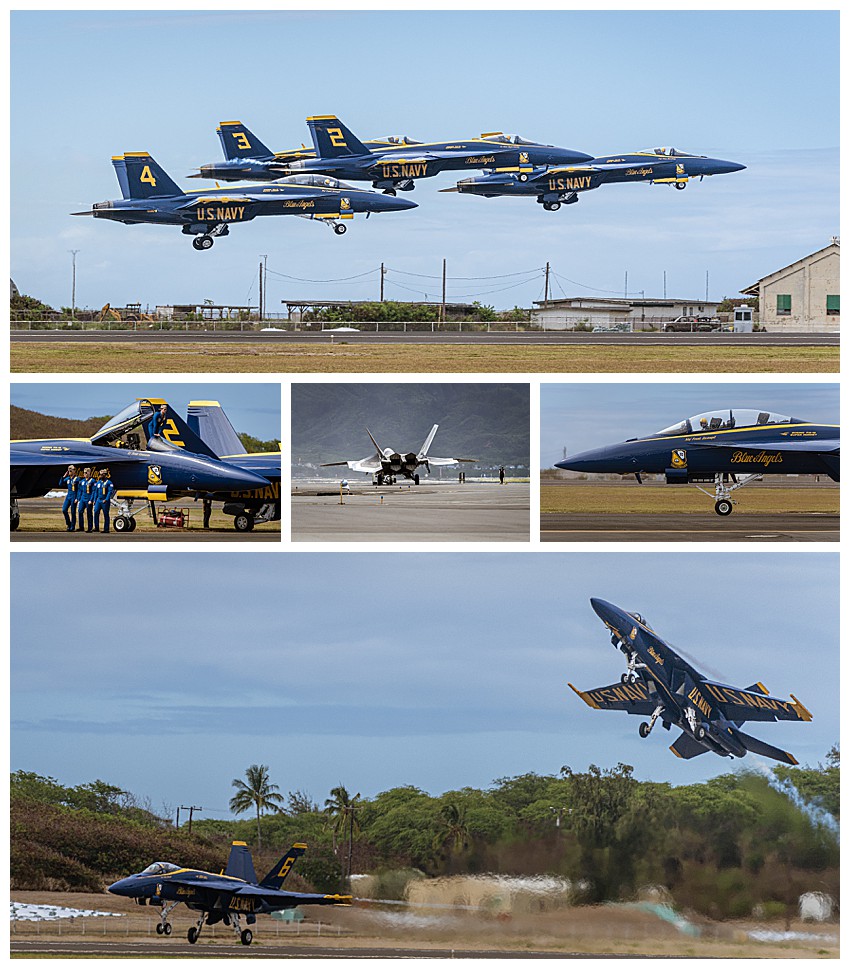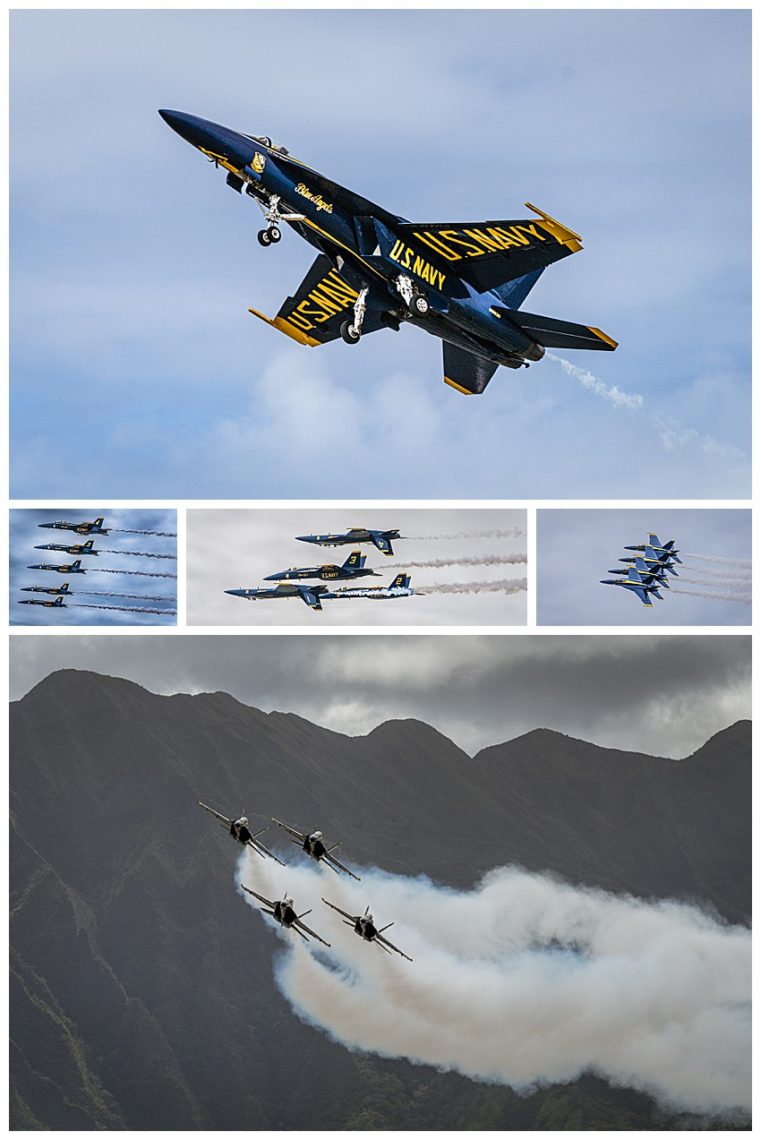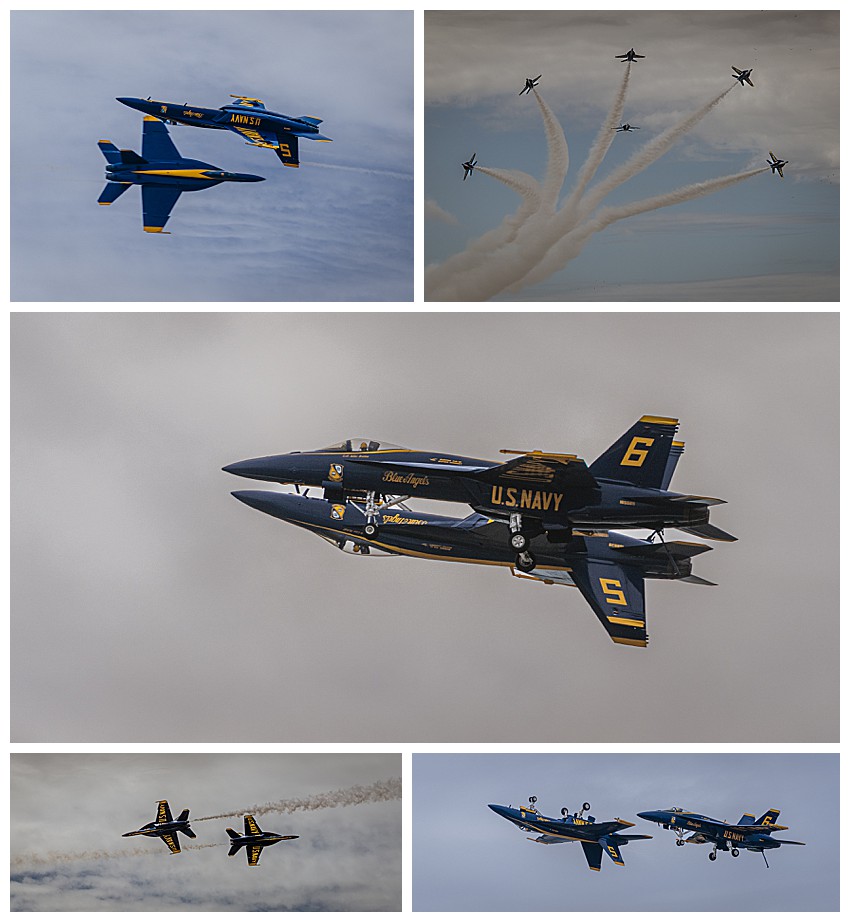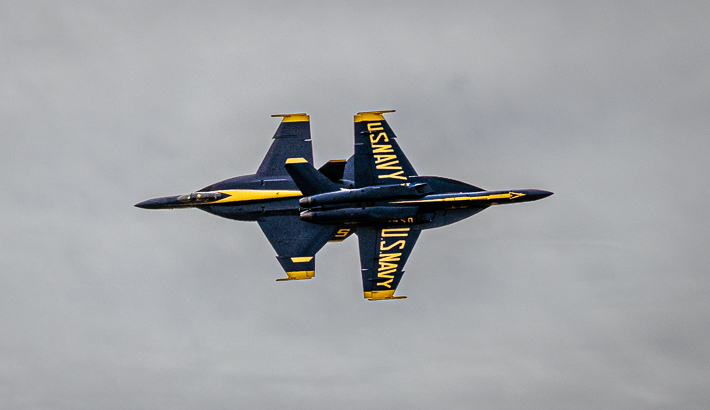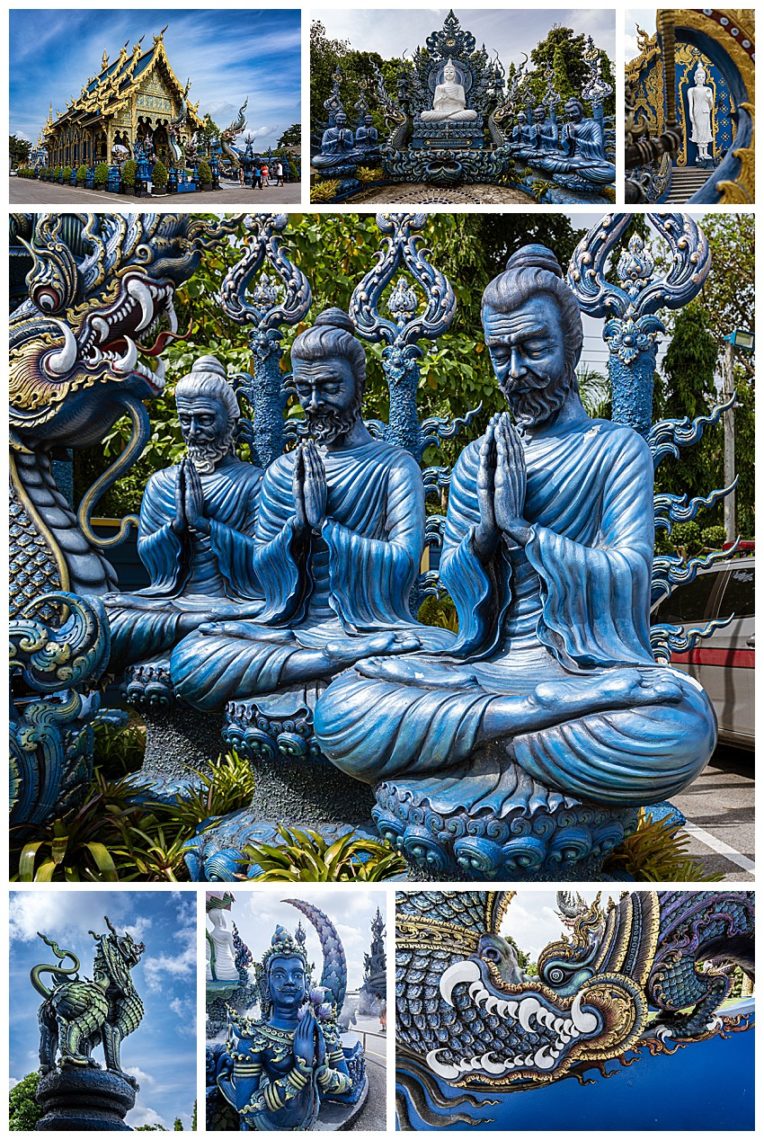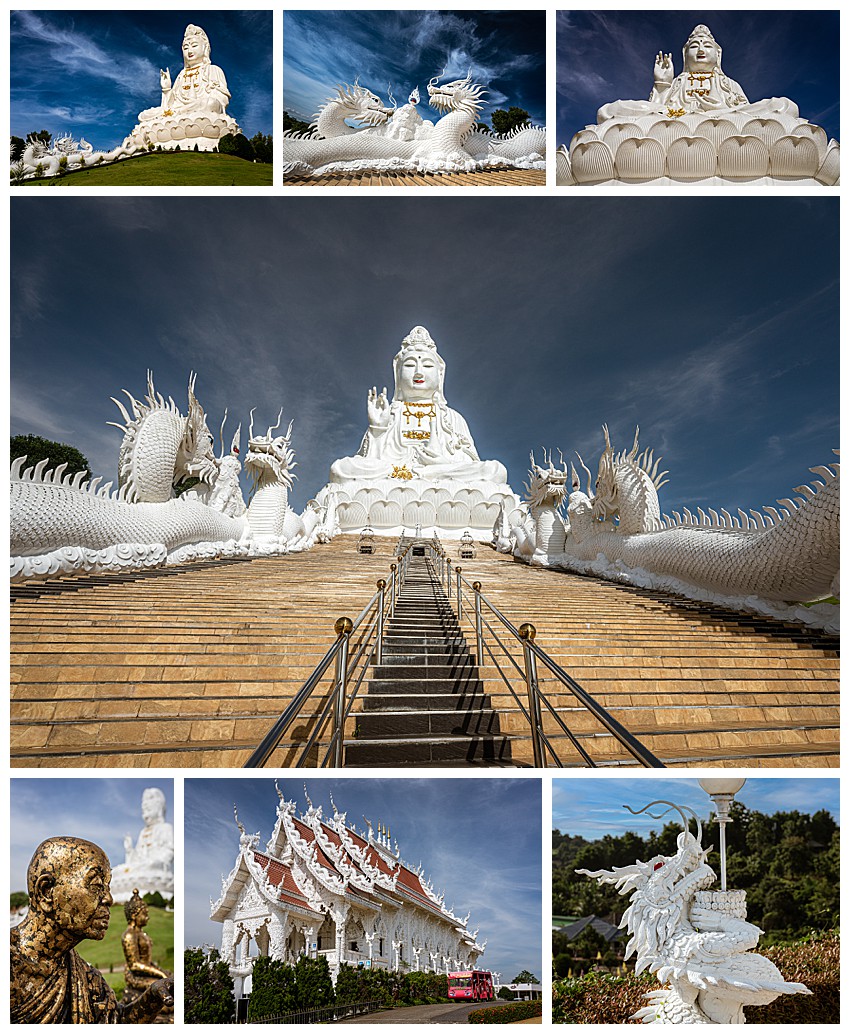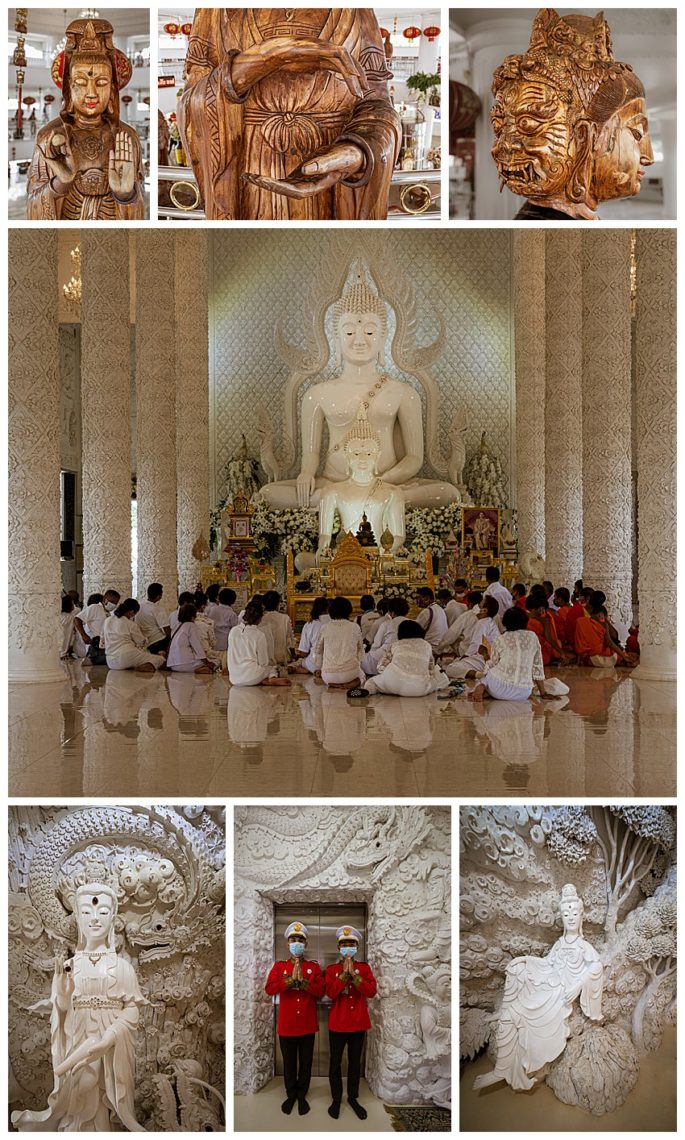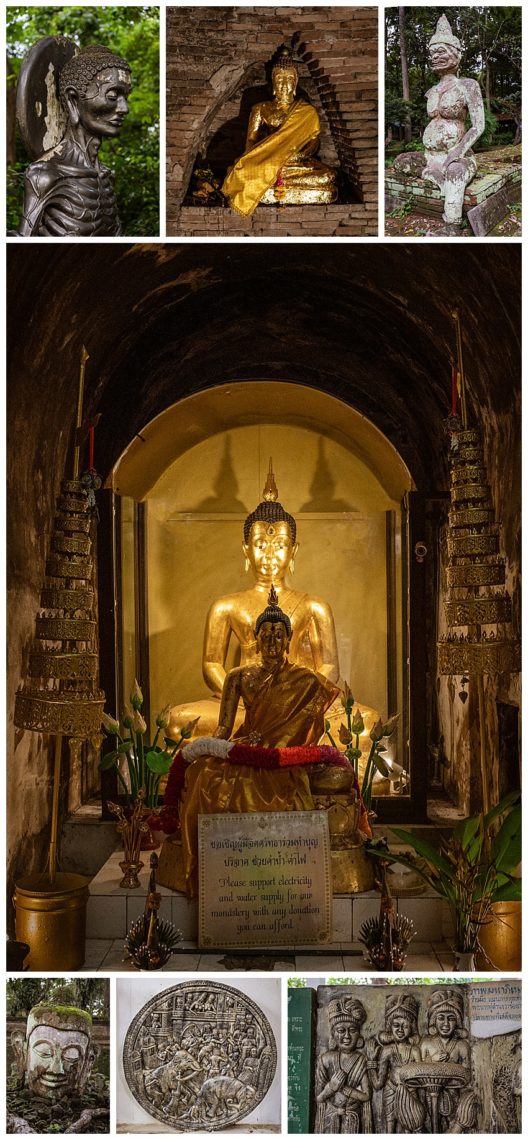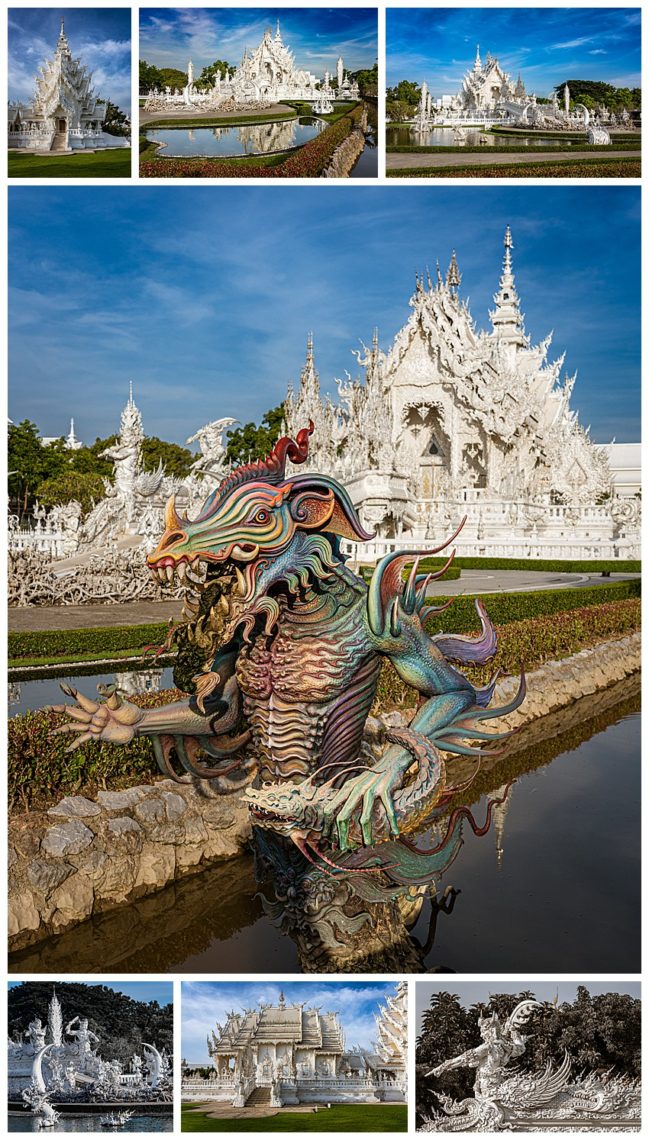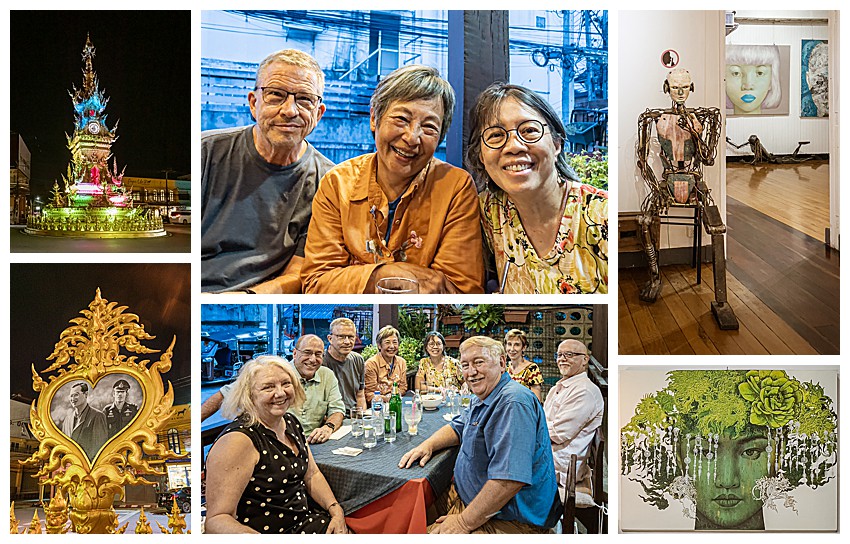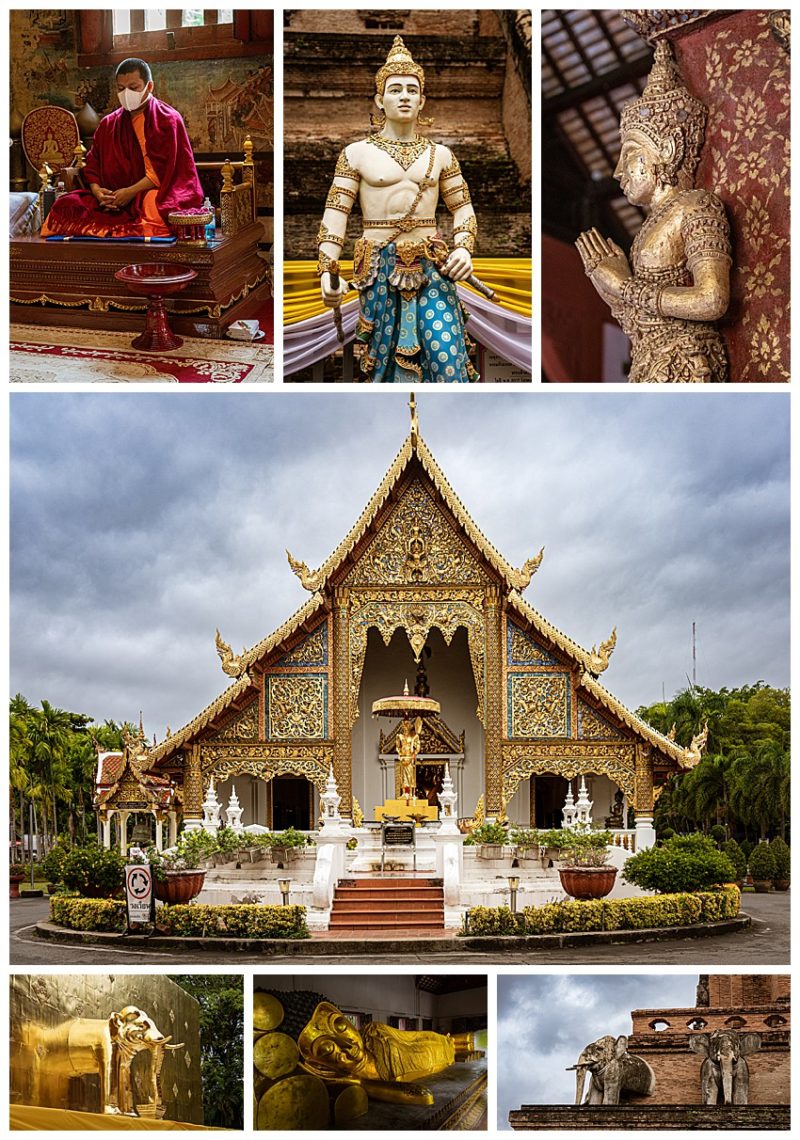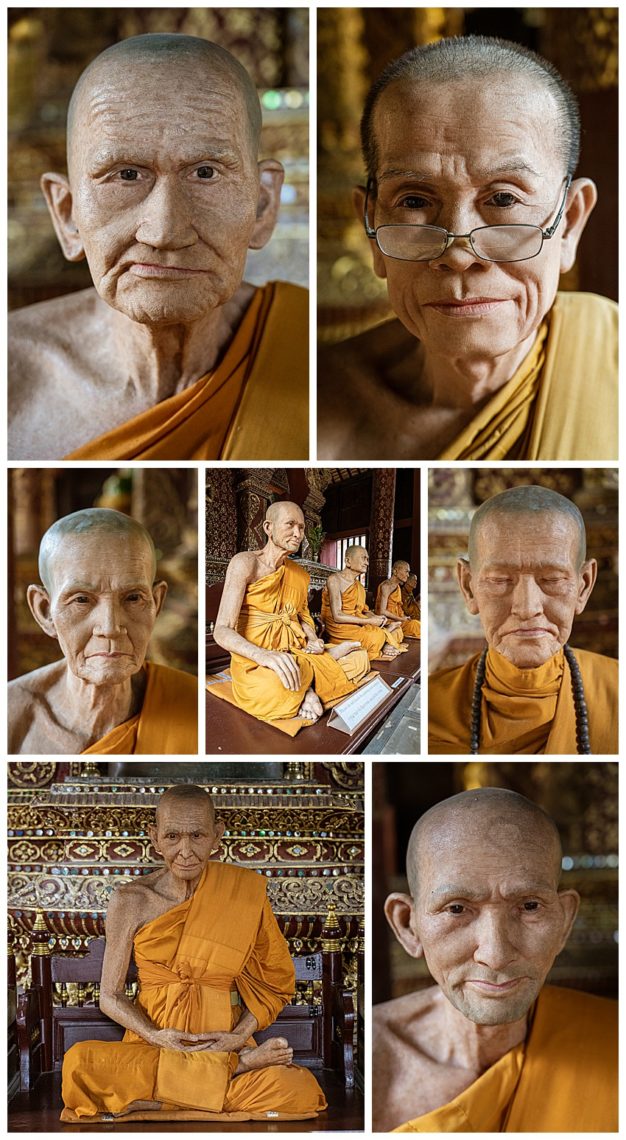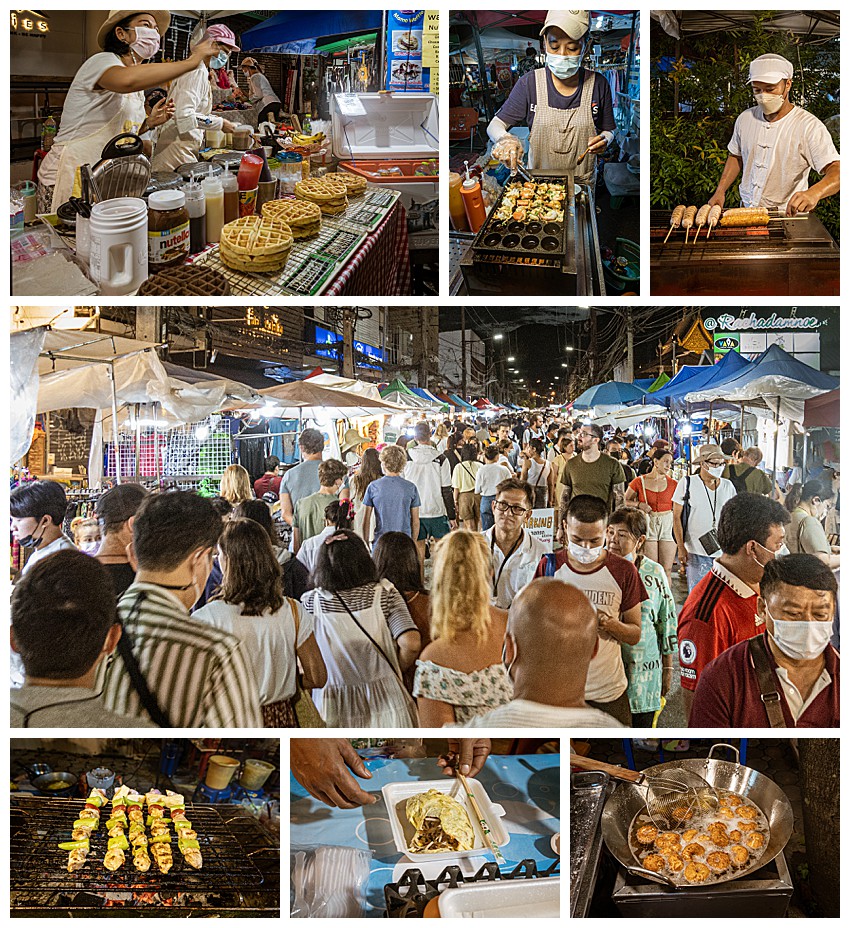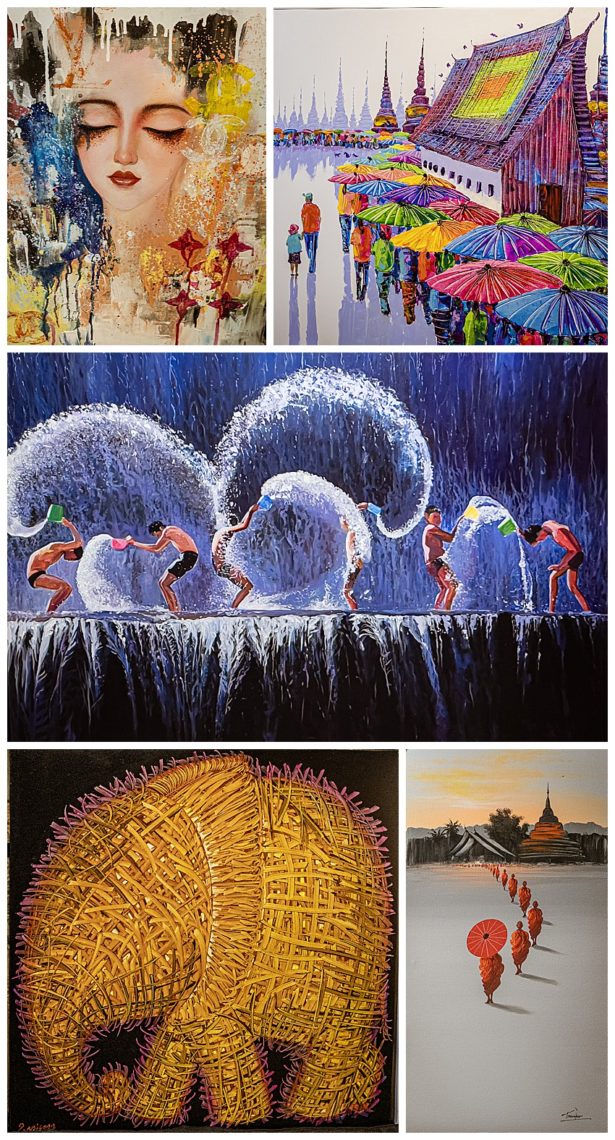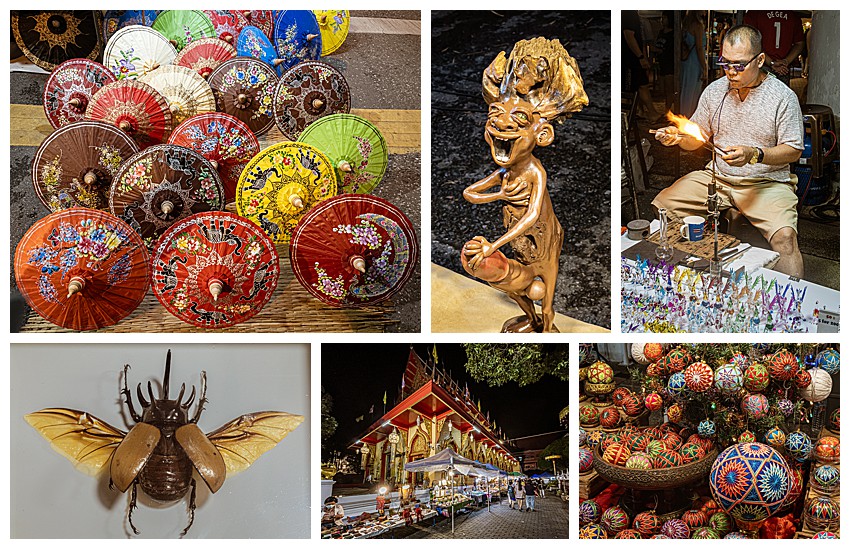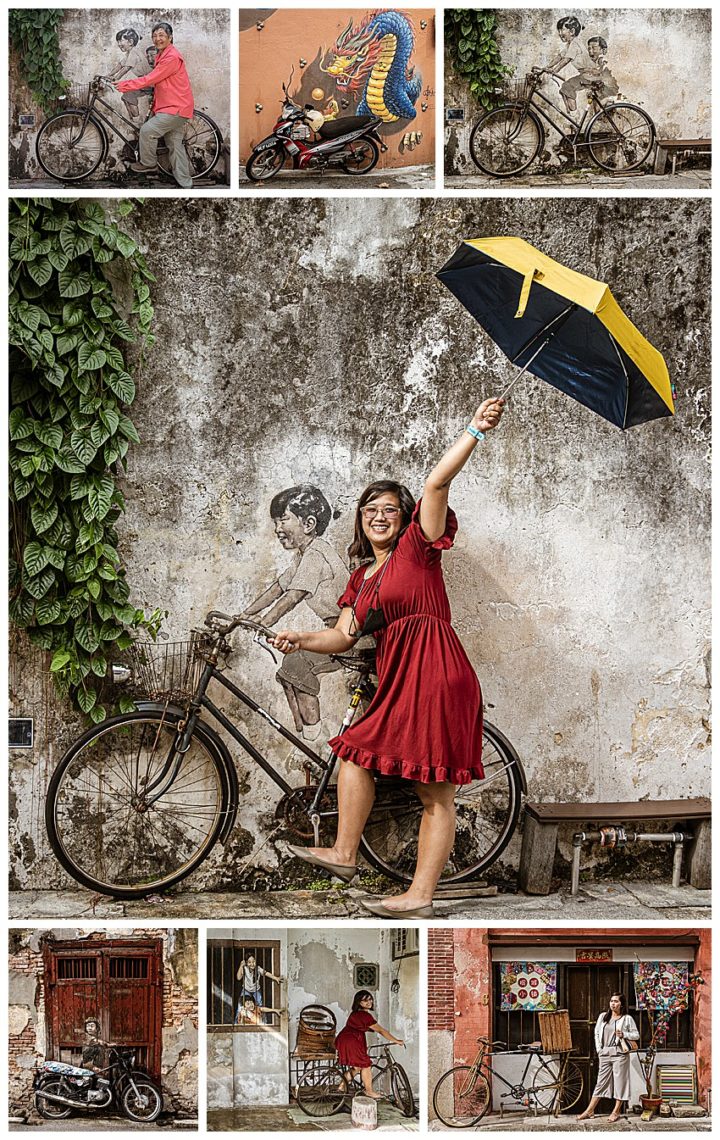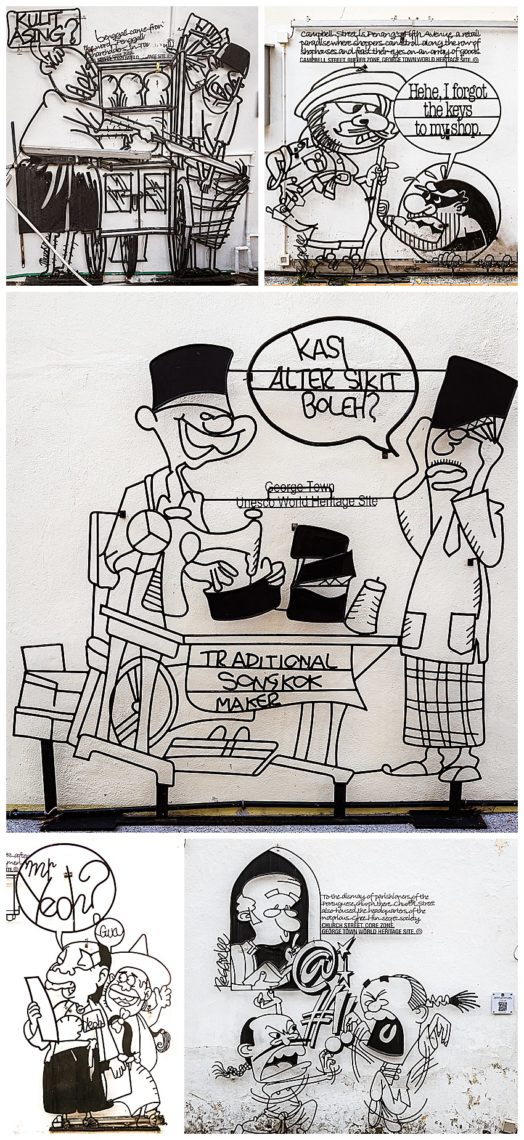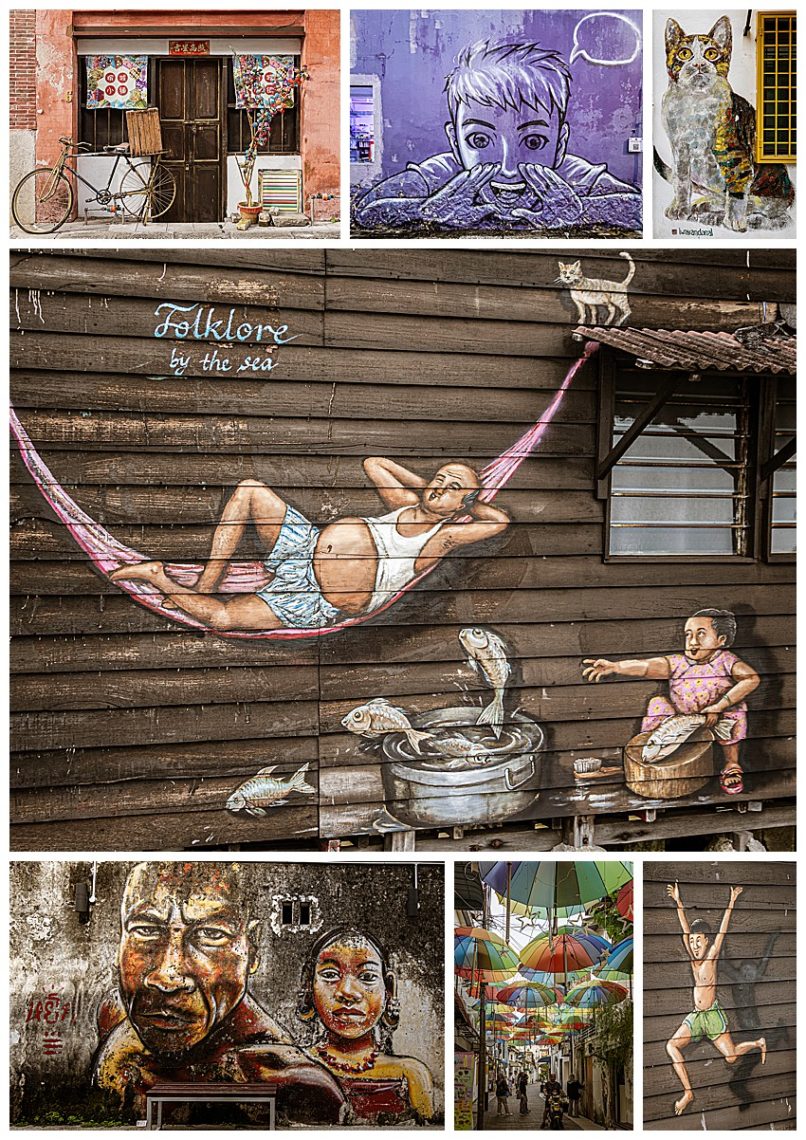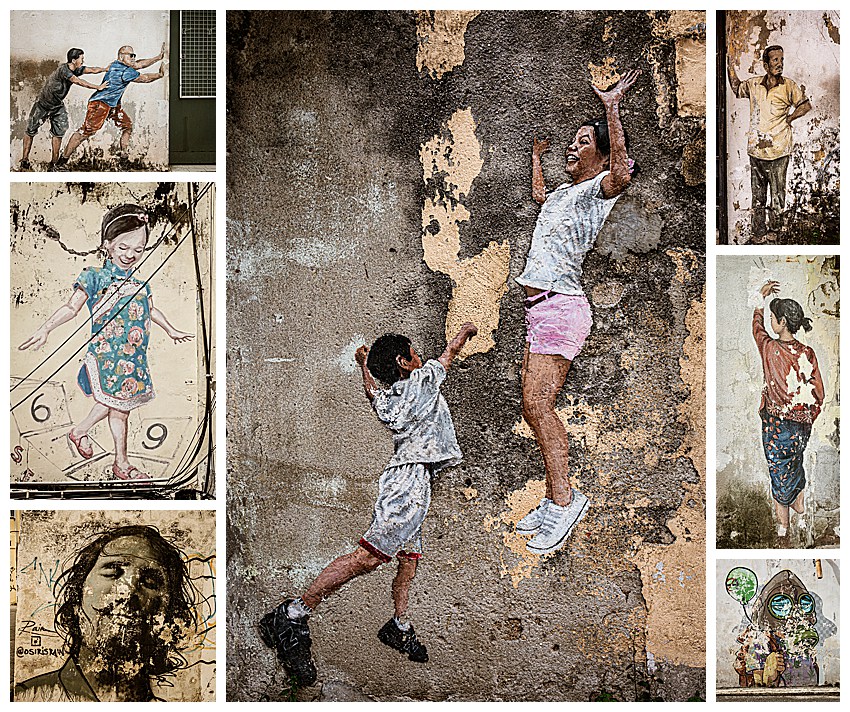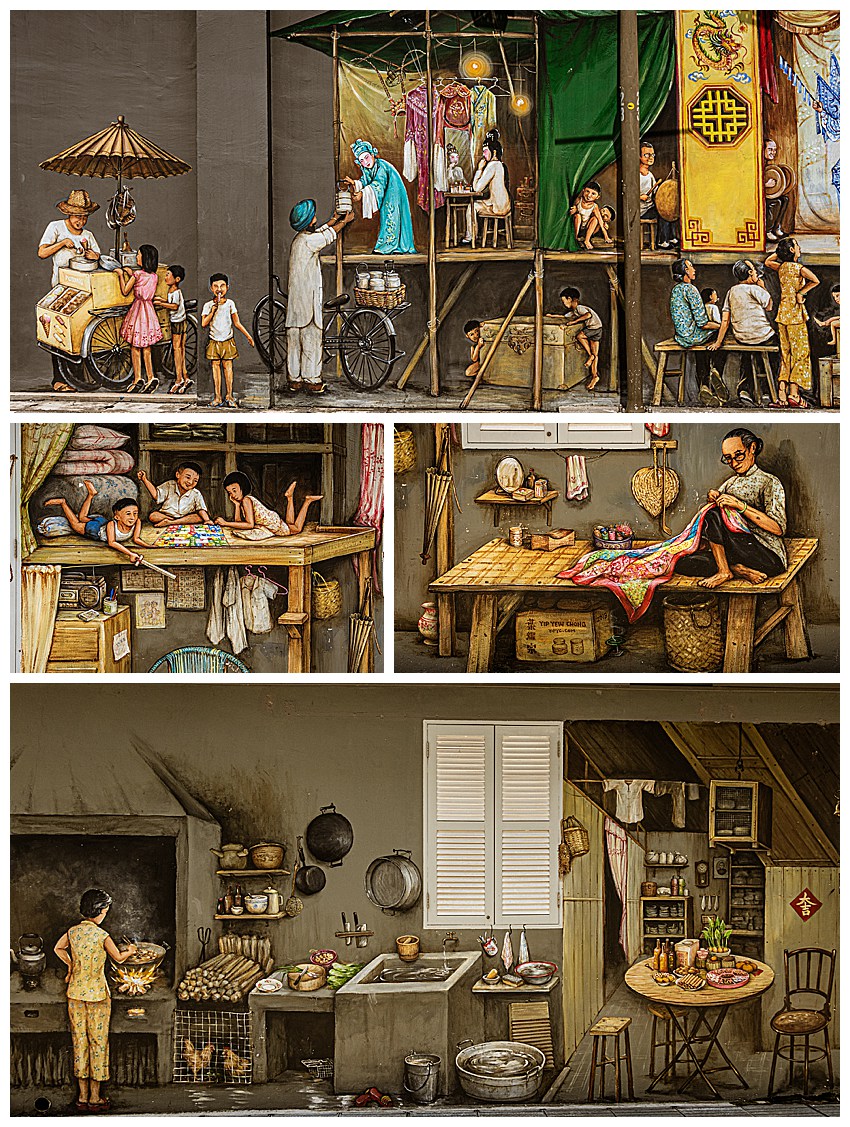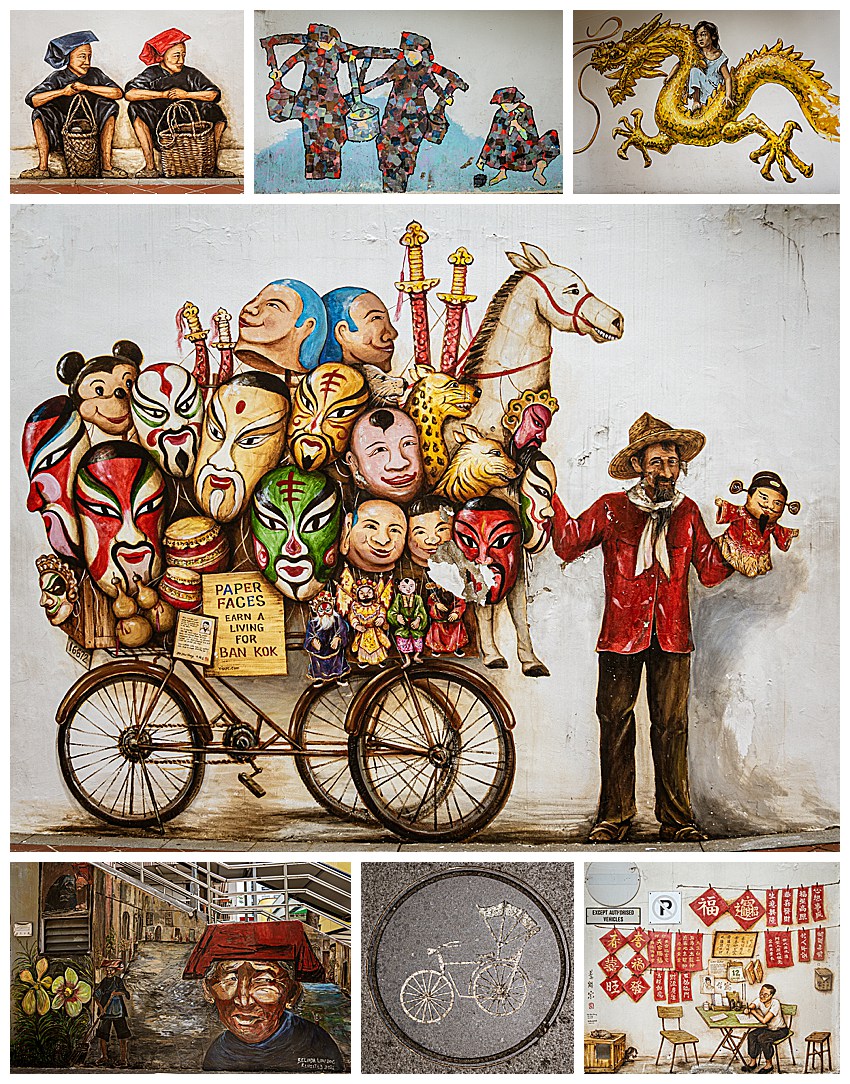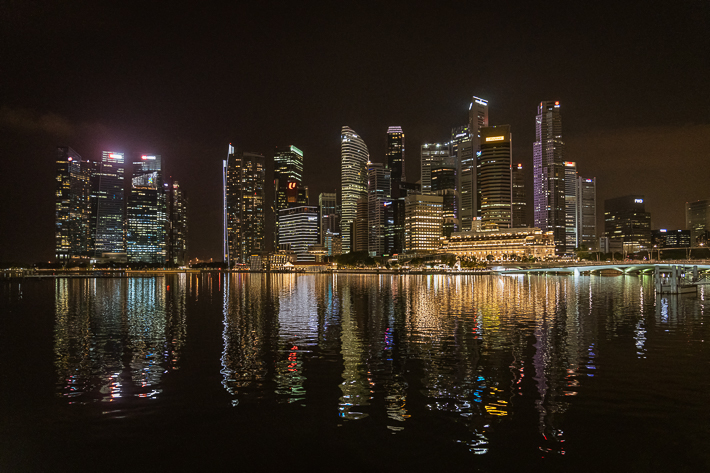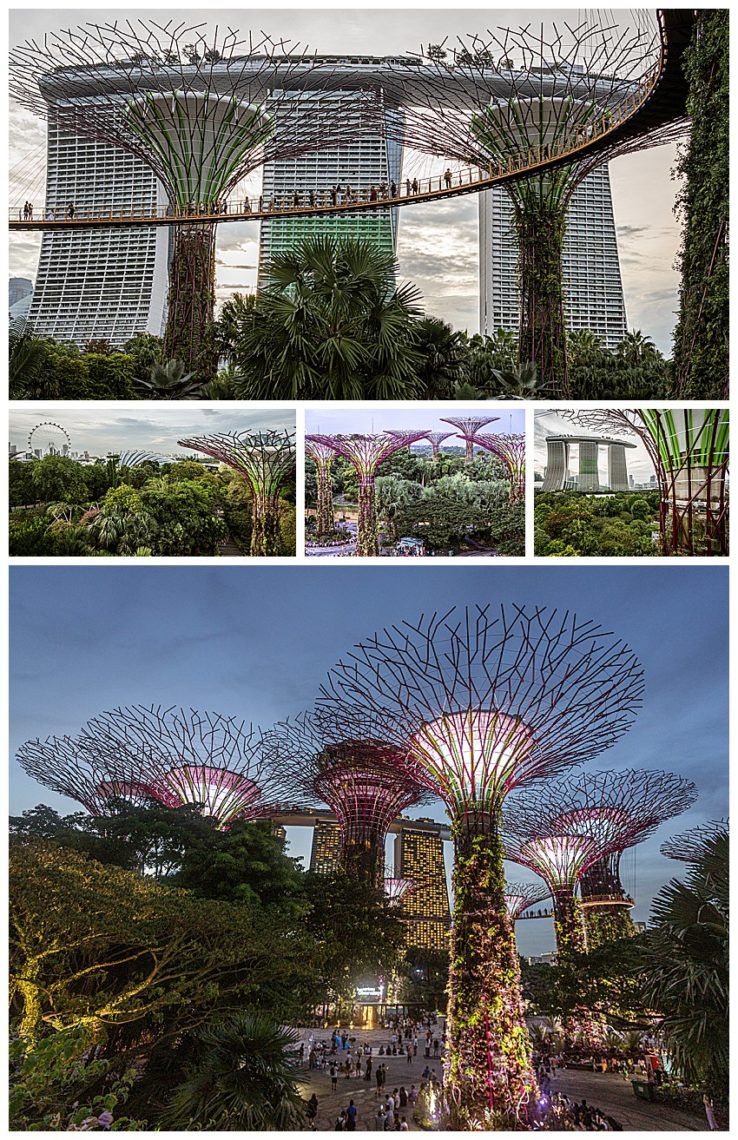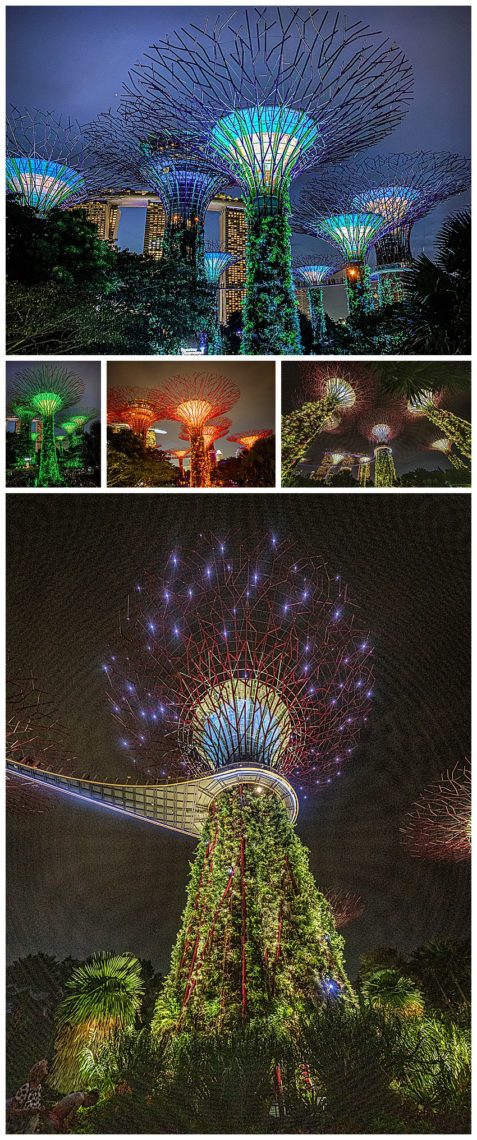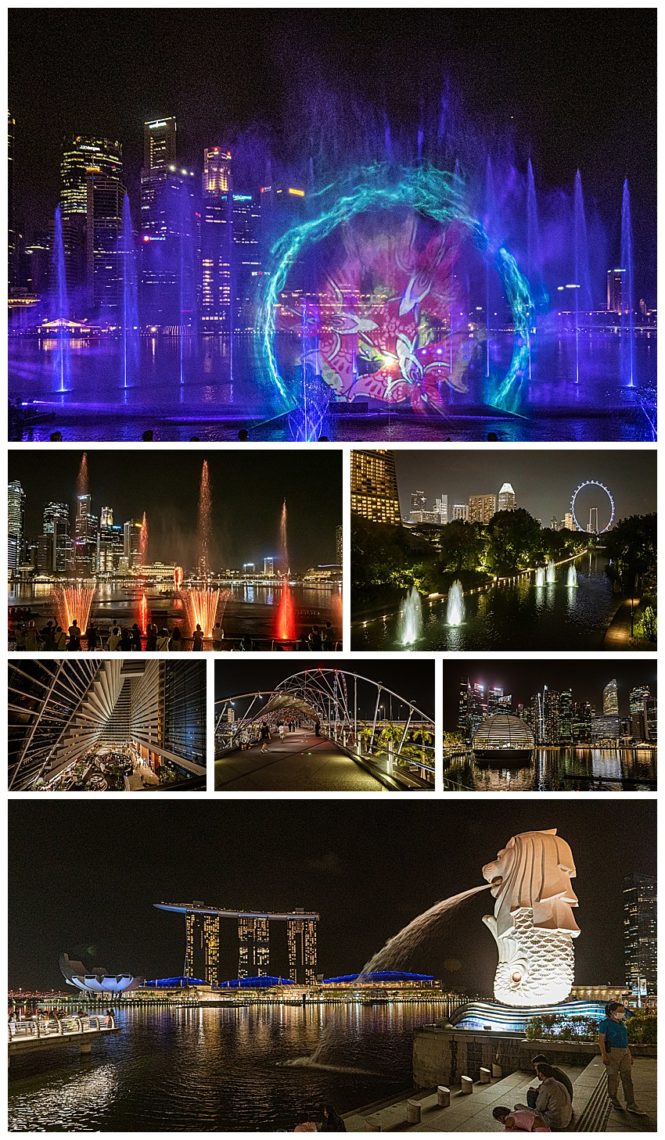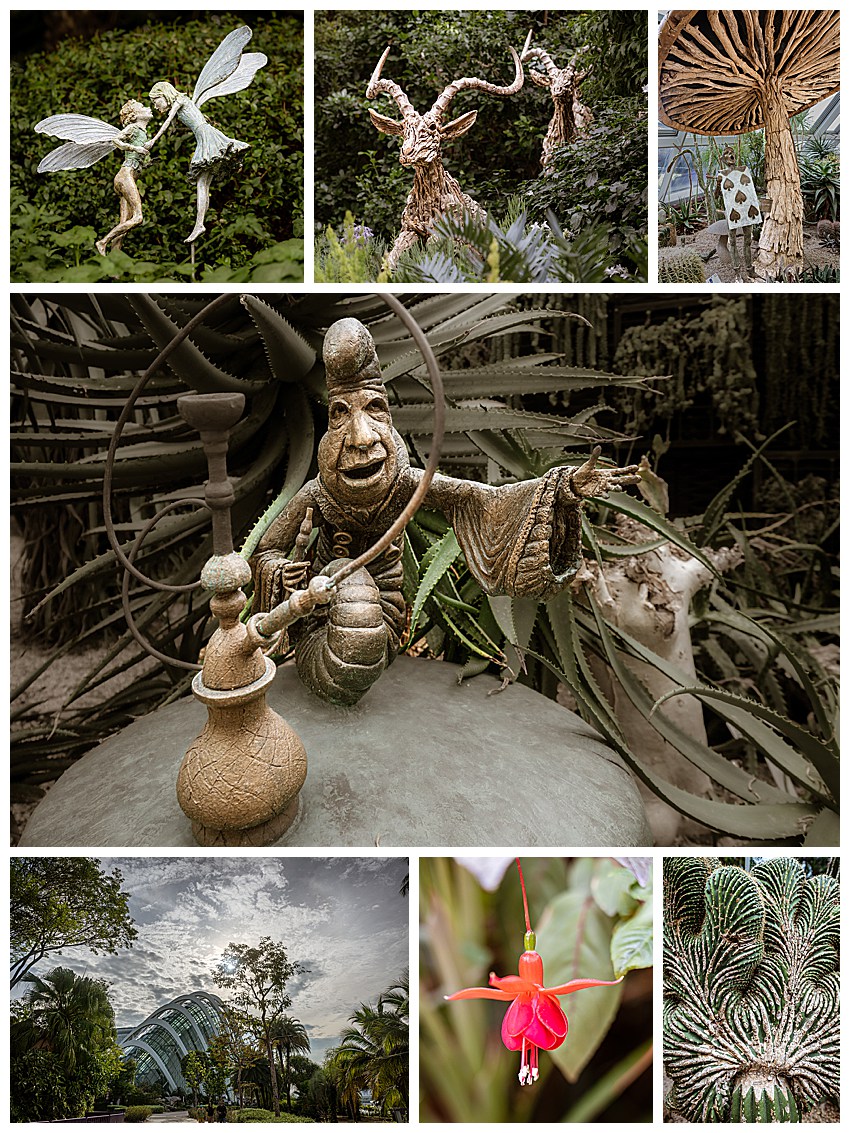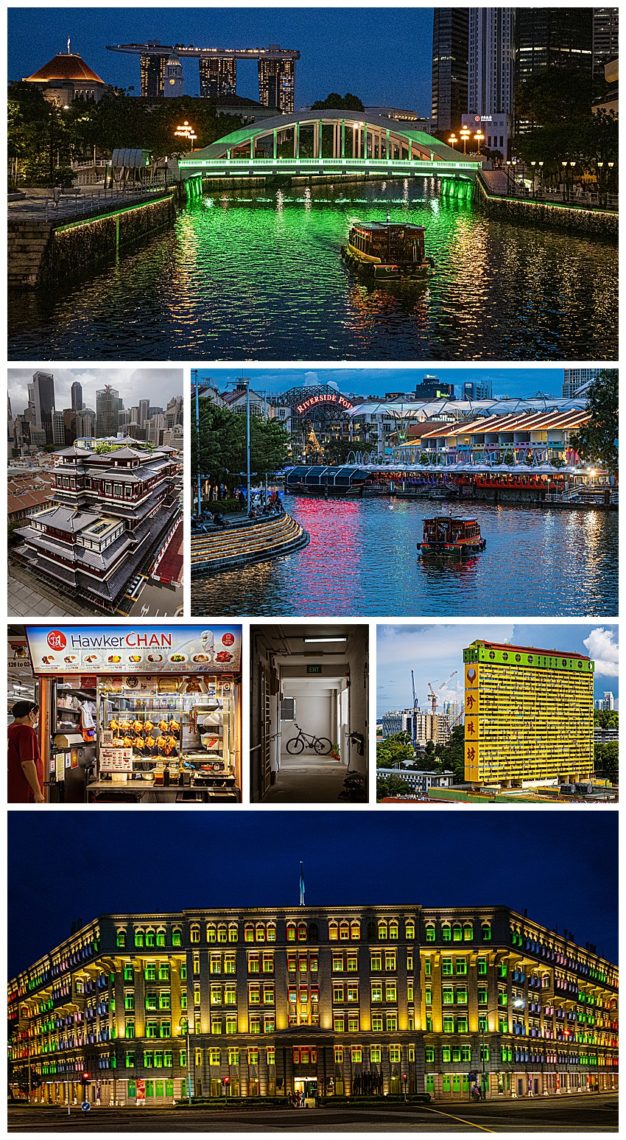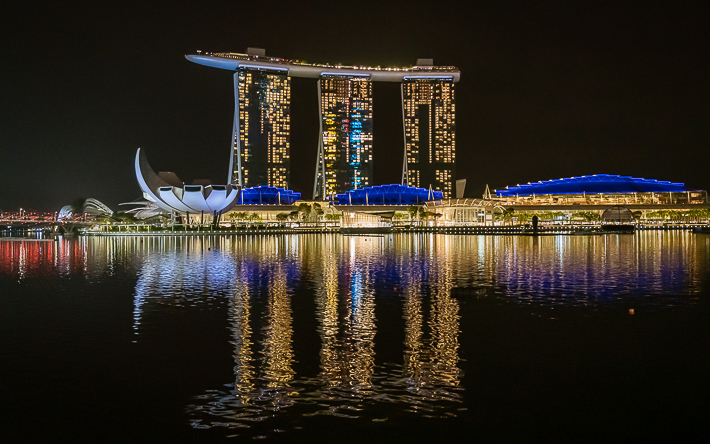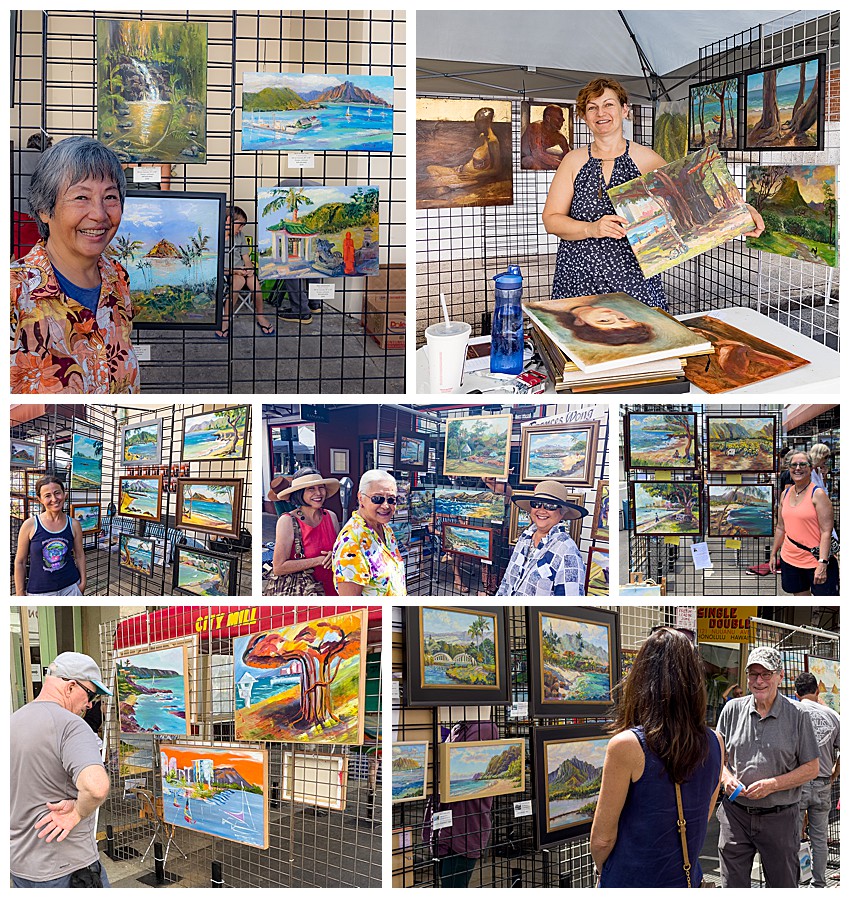
The Plein Air Painters of Oahu (PAPO), led by Mark Brown, was invited to showcase their plein air paintings at a Chinatown street fair yesterday. Approximately 20 painters from our group participated in the fair.
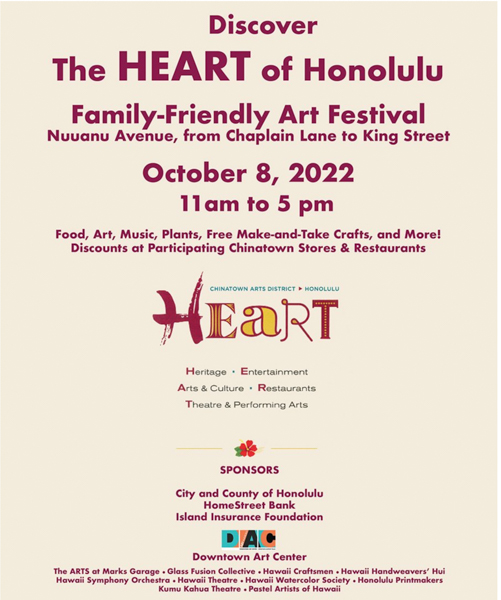
The organizer was DAC (Downtown Art Center, in the Chinatown Arts District in Honolulu). The show was called “The HEART of Honolulu” (above), where HEART stands for Heritage, Entertainment, Arts & Culture, Restaurants, Theater & Performing Arts.

The setup was quite a challenge. The group was allowed 1 hour to set up from 9:30-10:30 with the event opening at 11:00 AM, and then closing at 5:00. Mark had rented a tent for our 10′ X 20′ booth, which was scheduled to arrive at 8:30. At 10:00, Mark called to ask where it was. The tent was finally delivered in pieces at 1:30. The rental staff was supposed to assemble the tent (upper-left), but they were clueless, and finally gave up and went home with their unassembled tent at 2:30.
Fortunately, the team of artists set up the grids (center), once it became clear the tent might not arrive. Mark Brown spent the prior night creating and painting black stands for the grids (bottom-center), as there was no way to pound stakes into the pavement to stabilize the grids.
In the end, it was a very successful show, with many paintings shown and sold. The lack of a tent did not deter the audience, while the painters took turns between the shade and in the open display. Thank you Mark for getting plein air painting introduced to the community.
Also, throughout the day, there were many music and theater groups performing in front of Mark’s Garage, including a hula dancer (bottom-right), and a group performing Wizard of Oz songs from their play.
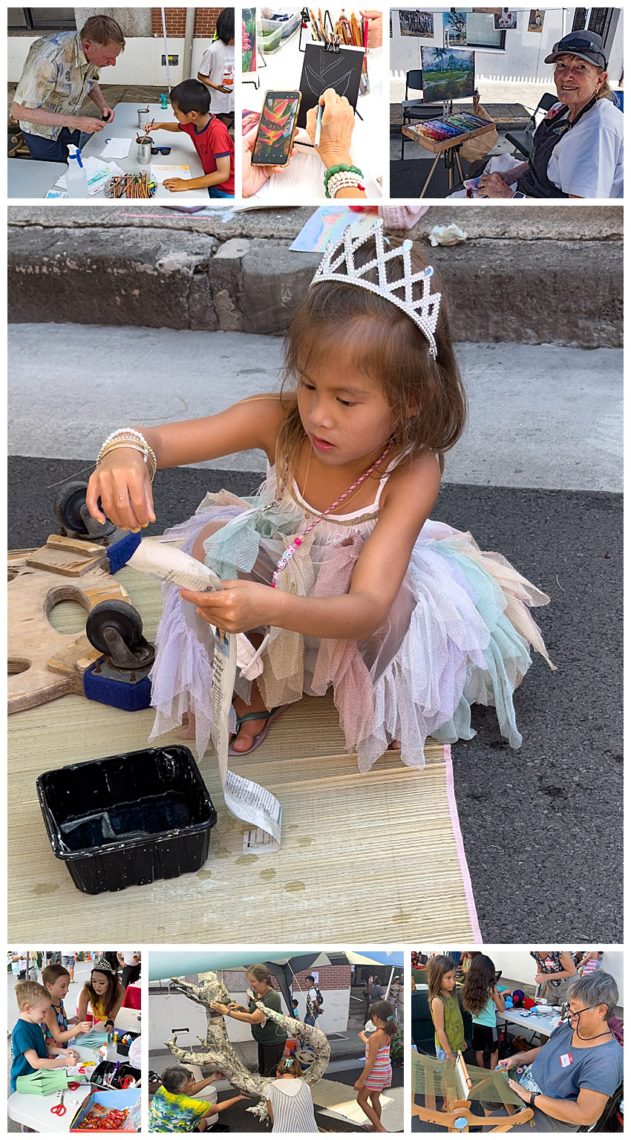
As part of the program, there were many tents set up for instructing kids and adults on using various types of art mediums. These ranged from watercolor, pastels, and acrylics painting (top row), as well as making paper mache dragons (bottom-center), and even weaving (bottom-right). It was obvious throughout the day how involved and fascinated many of the audience was in these mini-workshops.

The highlight of the show was Sergio Garzon’s PRINT BIG. This is a huge block printing process called Steamroller Printmaking, which includes using a type of heavy construction equipment, such as a steam roller (upper-right — typically used in construction for leveling asphalt roads), to transfer the image with black printer’s ink from plywood plates (above) onto a large piece of heavy cloth or canvas.
Sergio starts with a design, which is then cut into sheets of plywood with a router. The huge plywood pieces are cut into a puzzle to be assembled on-site, with the curves helping to set up each segment correctly. Those plywood puzzle pieces then have black printer’s ink rolled onto them, with the help of his 15 volunteers from Punahau and the Big Island, who were willing to get their clothes messed with ink.
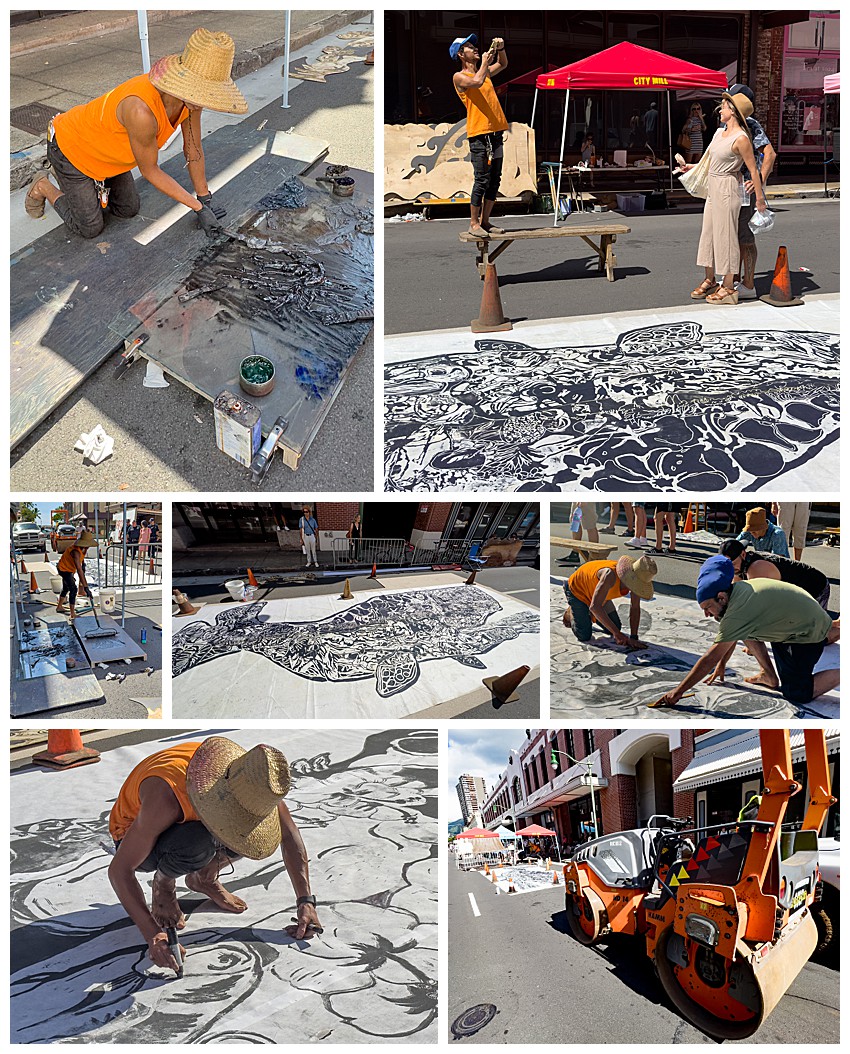
Most ambitious artists make prints no larger 4′ x 8′, but Sergio goes much further, making prints that were at least 4 times that size, at approximately 12′ x 32′. Once on site, such as at this art fair, it requires several hours to prepare the ink (upper-left and center-left), and then transfer the ink to the wood plates (prior block). After a cloth sheet is laid over the inked plywood plates, a steamroller (lower-right) is used to transfer the ink from the plywood to the final surface. After the image is revealed, it is finished by hand with ink rubbing using wooden burnishers (center-right), and finally touched up with a black marker pen by Sergio, the master print making artist (bottom-left).
Watch the 75-second video above for a time-lapse of the process of putting the plywood plates in place, and then running the steamroller to create the final image.
